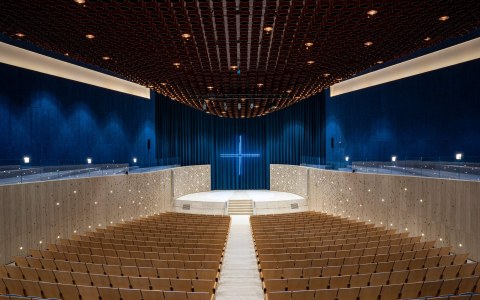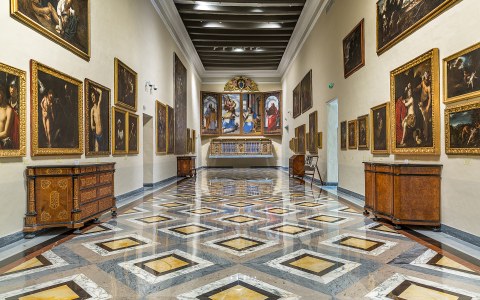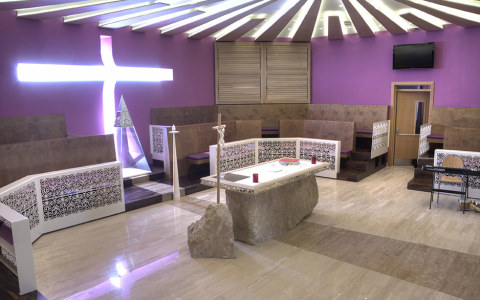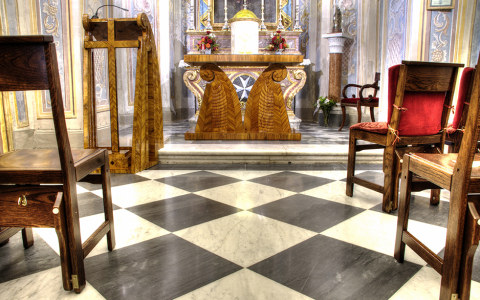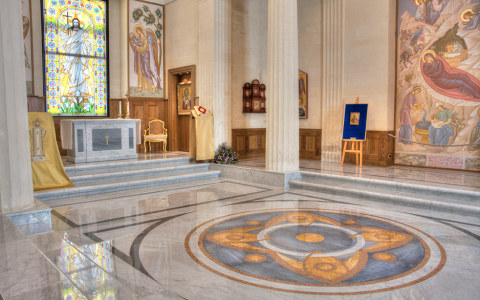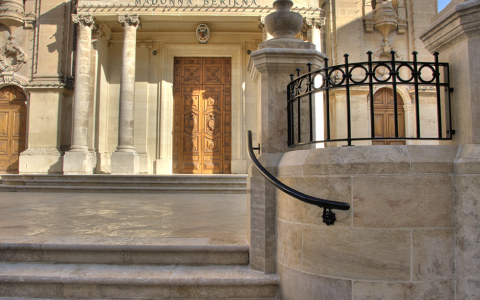The M.U.S.E.U.M Auditorium is a fascinating project, realised in 2019. It took us approximately a year to detail, fabricate and install tonnes of travertine to furnish this masterpiece according to the Clients’ and Architects’ vision. The Travertine Classico marble was sourced from the mountainous region outside Tivoli, where the marble was selected from a particular strata with a careful consideration of its size, hue and structural integrity of the quarried mass. Approximately 10, twenty-two tonne blocks were used to furnish the space, 250sqm of material were sawn and cut into 100mm thick slabs for the production of the radial auditorium …
Halmann Vella recently helped restore the marble floor of the Mdina Cathedral Museum back to its former glory.
This chapel is located at San Anton Palace, dating back to Knight Fra Antoine de Paule, a Frenchman from Provence, who was elected Grand Master of the Order of St. John in 1623. The Chapel is dedicated to the Madonna del Pilar. Its vault is decorated with the coats-of-arms of Grandmasters Antoine Manoel de Vilhena, Manoel Pinto de Fonseca and Emanuel de Rohan-Polduc. The chapel is similar to the contemporary churches of the first half of the 17th century found in towns and villages. The altar is set in a deep chancel separated from the nave by two pilasters which carry …
Inaugurated the newly restored Russian Chapel in San Anton Palace. This is one of the two chapels in the palace. Starting out as a chapel for Protestant worship, for the British Governors, the chapel was given over to the Orthodox denomination in the second half of the 19thvCentury. This change was affected due to the fact that Prince Alfred, son of Queen Victoria, was stationed in Malta and was married to Grand Duchess Maria Alexandrovna, daughter Tsar Alexander II. She had introduced in the matrimonial contract the right to practice her religion and this chapel was placed at her disposal. …
The Parish Church in Gzira dedicated to Our Lady of Mount Carmel and was built after Gzira became a parish in 1921. The people of Gzira built the church themselves replacing a small chapel known as the chapel of Our Lady of the Stone.

